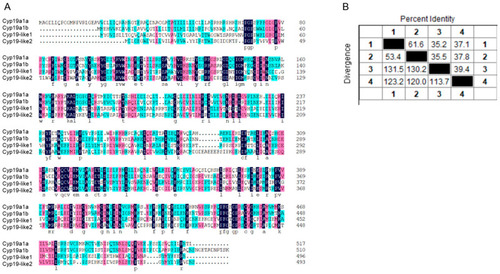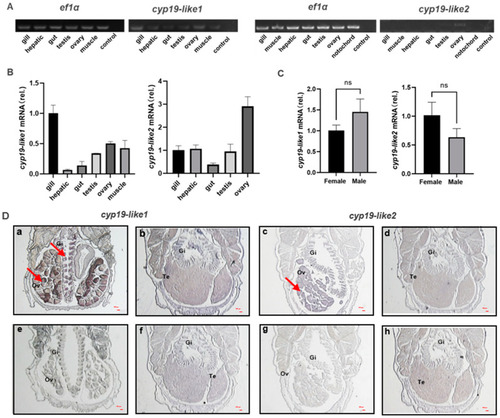- Title
-
Identification, Expression and Evolutional Analysis of Two cyp19-like Genes in Amphioxus
- Authors
- Wang, Y., Lin, J., Li, W., Ji, G., Liu, Z.
- Source
- Full text @ Animals (Basel)
|
Complete ORF nucleotide sequences of two |
|
Comparison of the gene structures of |
|
Alignment of amino acid sequences of |
|
Prediction of Cyp19 structures in zebrafish and amphioxus. ( |
|
Analysis of synteny and phylogeny of Cyp superfamily across different species. ( |
|
Tissue expression and localization of |
|
Expression of |
|
Antibody preparation and protein expression of amphioxus Cyp19-like. ( |








